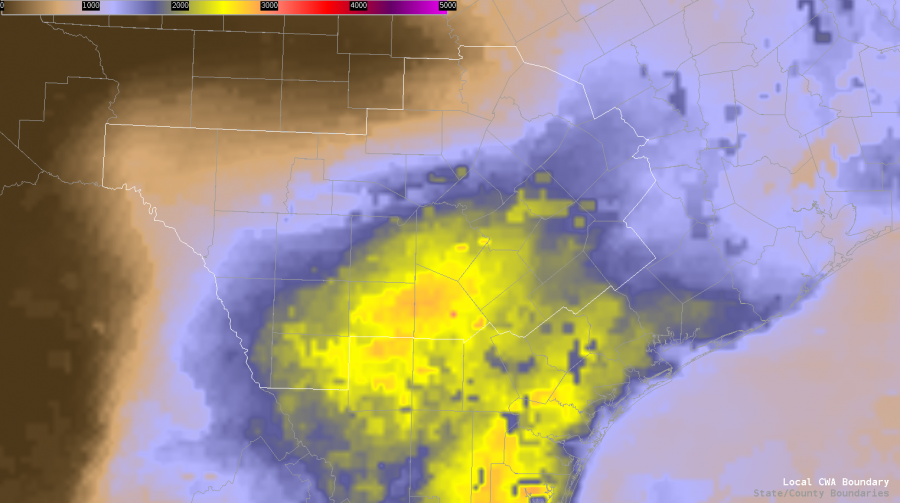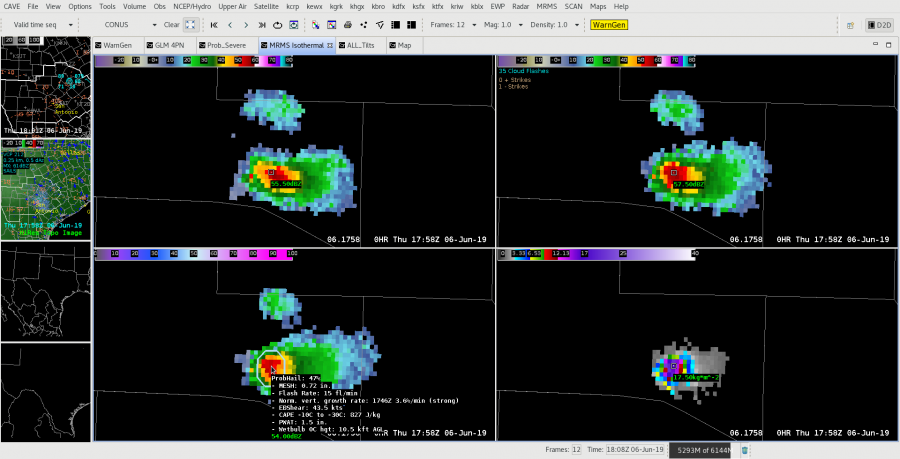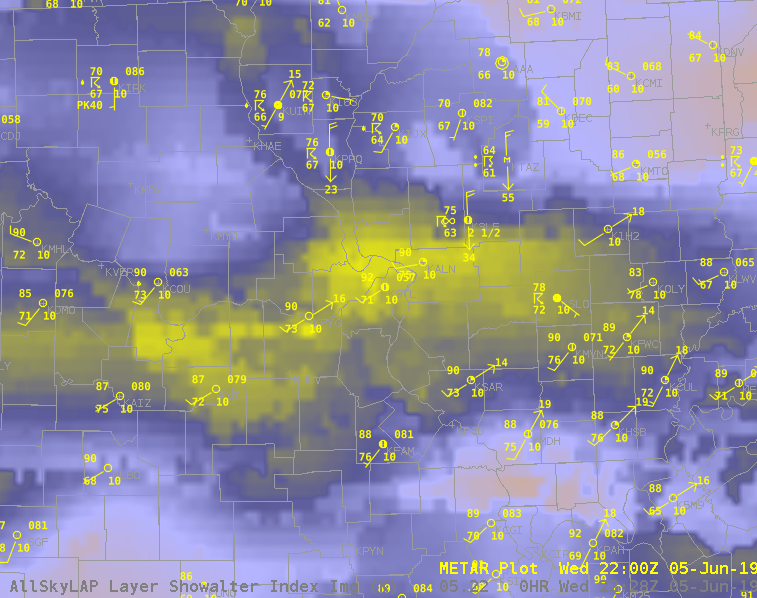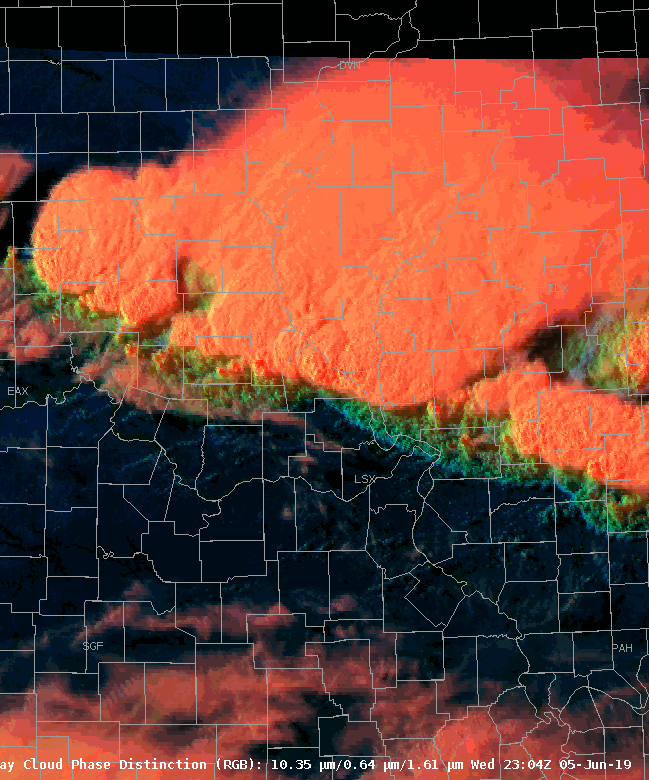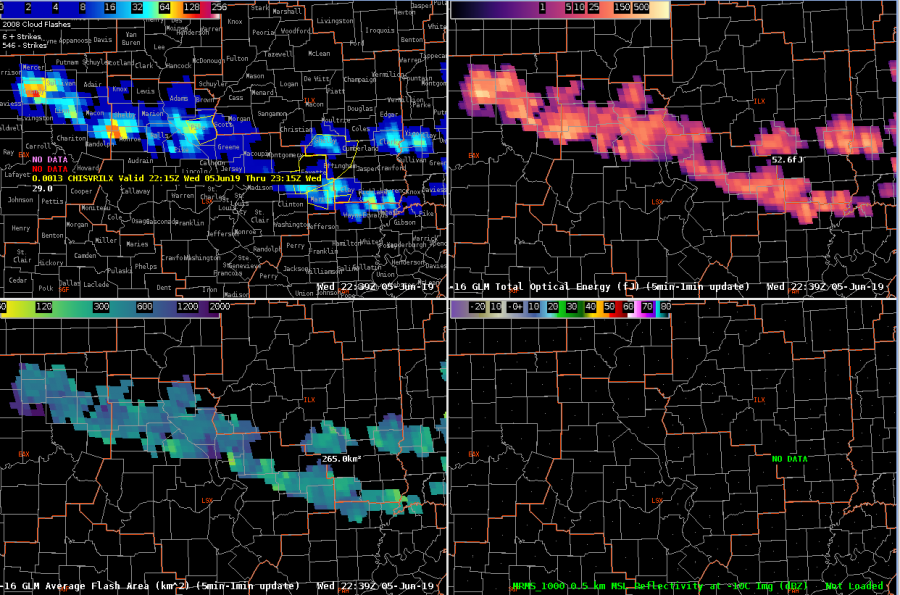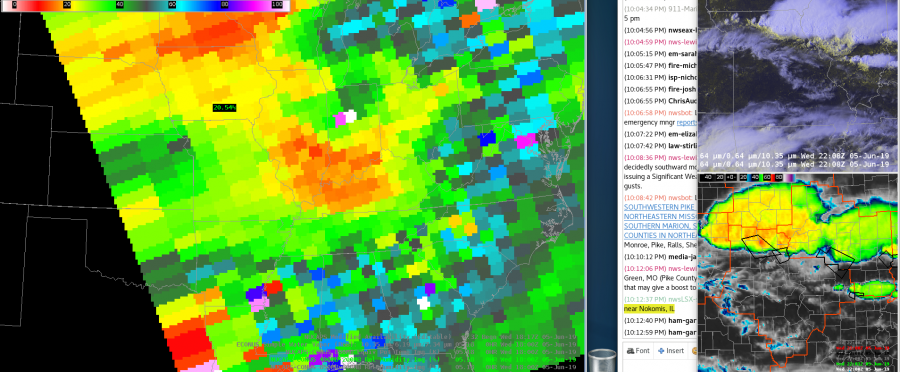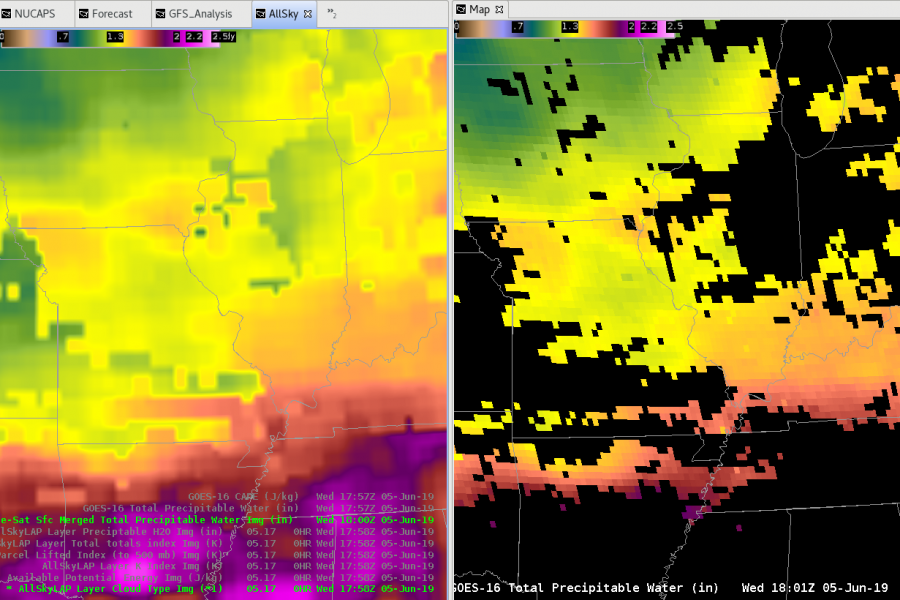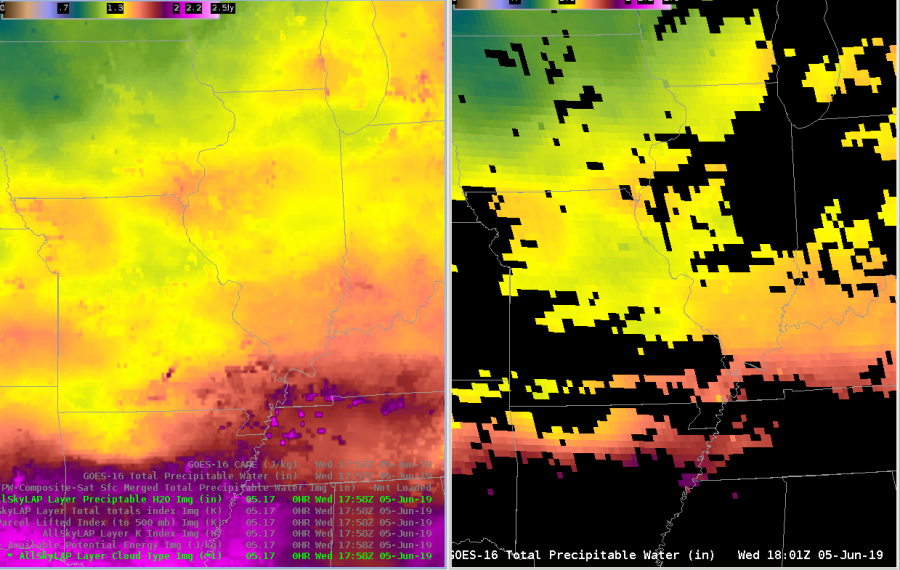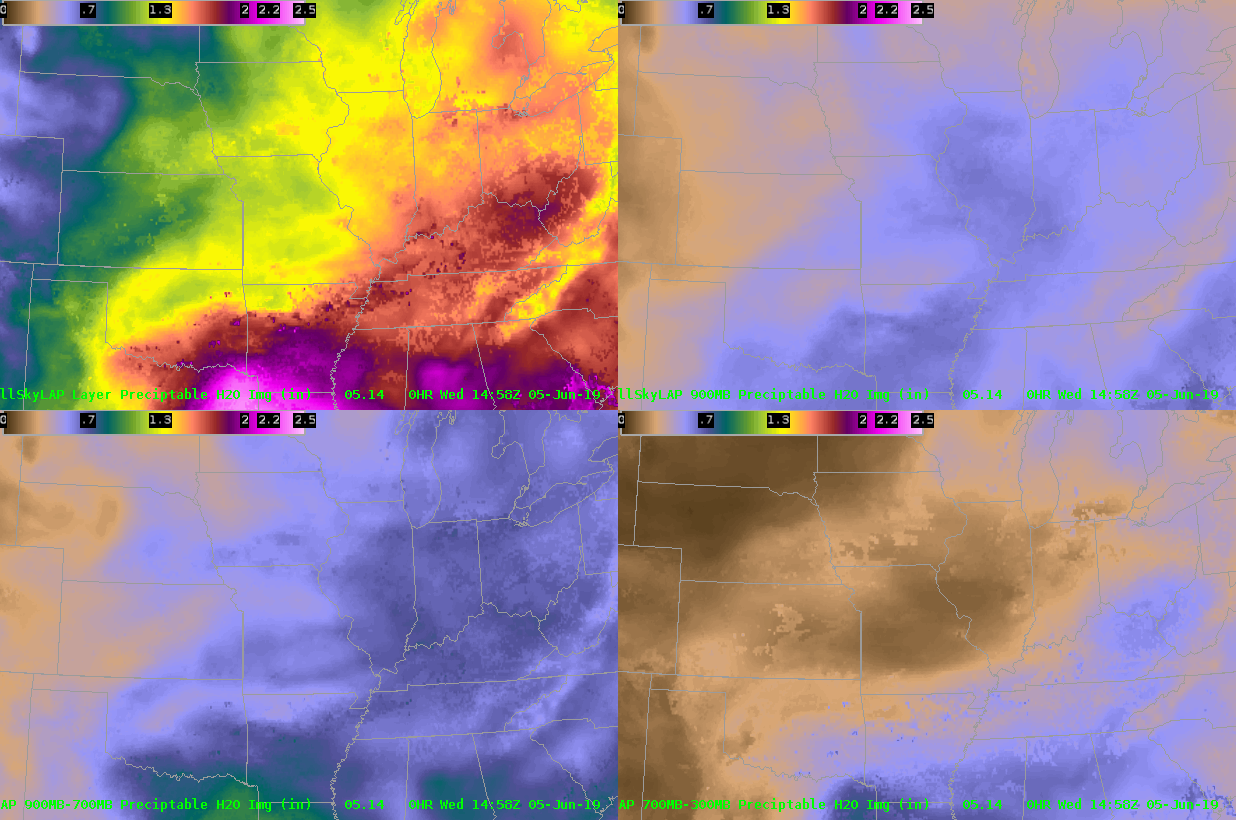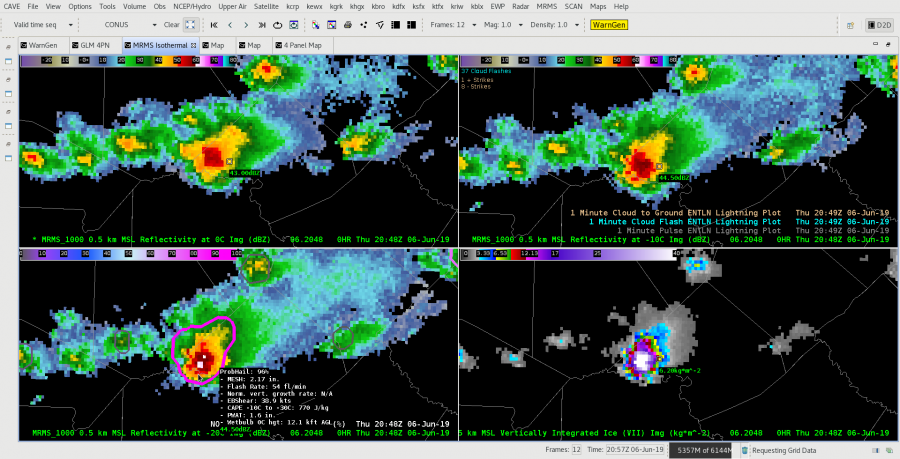
Had an interesting opportunity to watch a quickly intensifying cell relatively close to the radar. While ProbHail did a decent job monitoring the trend in this cell, its (2 to 4 minute) latency in an environment conducive of rapidly intensifying cell could possibly lead to a reduction in Lead Time. By monitoring the cell via All-Tilts BR/BV/CC/ZDR and GOES-East Satellite Imagery via Mesosector, I was able to get roughly 5 additional minutes of lead time on my warning (ProbHail was less than 45% by warning issuance). A good reminder as to how the ProbSevere suite is best utilized as an additional tool, and not necessarily the deciding factor in warning ops, especially in freshly forming cells.
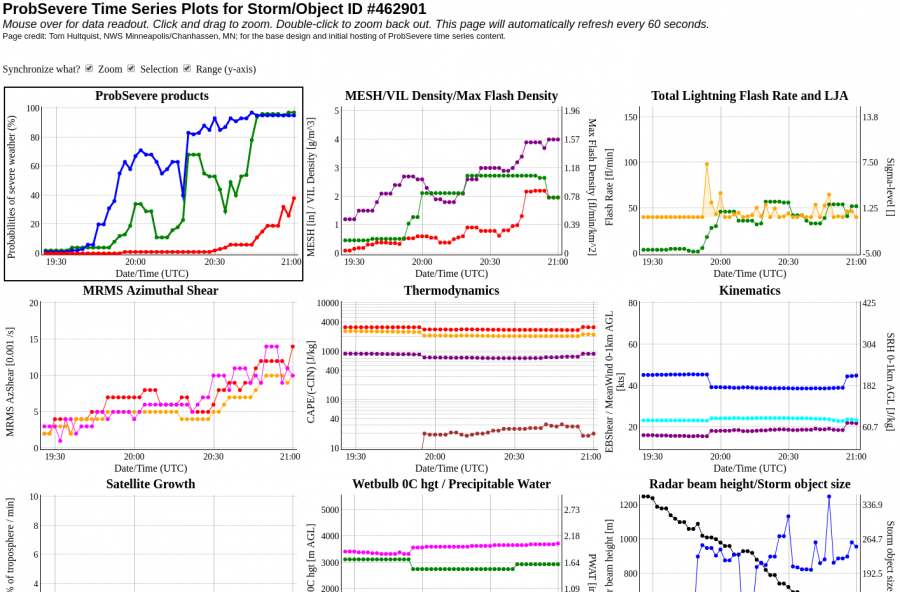
Quick update: The earlier warning did verify with quarter-sized hail. I did find some utility with the ProbHail when it came to making the decision to re-issue the warning or not, especially as the storm began to near the “cone of silence.” Accessing the time series which continued to show >95% ProbHail and a quick glance at a neighboring radar, I had enough forecasting confidence to continue the warning downstream.
—————————————————————————————————- Mountain Bone

